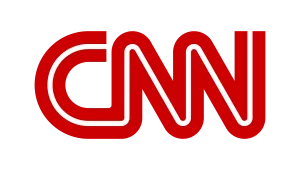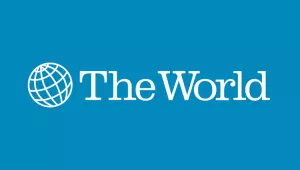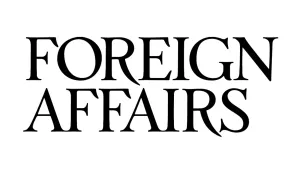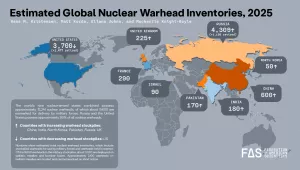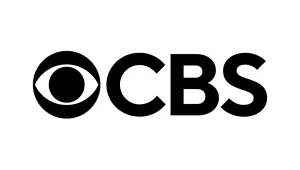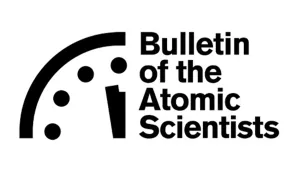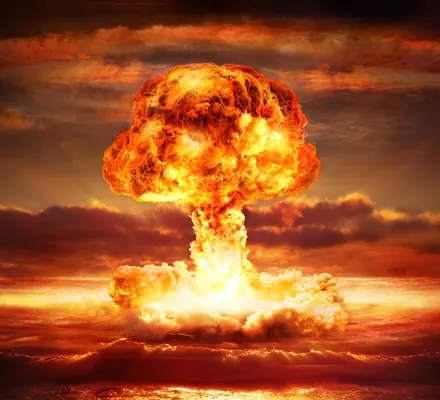
80th Anniversary of the Trinity Test: A Critical Moment for Dialogue and Disarmament
On July 16 1945, in New Mexico’s Jornada del Muerto desert at 5:30 a.m., the U.S. Army conducted the first ever detonation of a nuclear weapon as part of the Manhattan Project.
Now, 80 years later, nuclear tensions are resurfacing and the threat of proliferation grows. Nuclear Scientists and Experts at the Belfer Center come together to reflect on the Trinity Test as a critical moment at the dawn of the nuclear age and its enduring legacy, and question where we stand today.
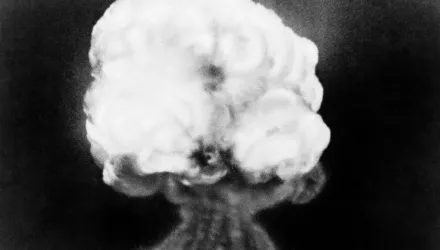
Nobel Laureates, Experts Gather to Call for Action to Avert Nuclear War
From Managing the Atom
We knew the world would not be the same. A few people laughed, a few people cried, most people were silent.
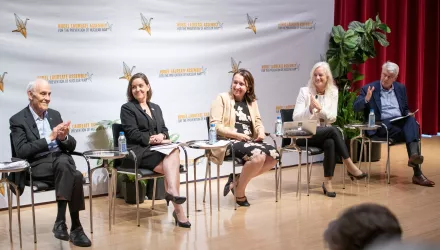
The Nobel Laureate Assembly Declaration for the Prevention of Nuclear War
From Managing the Atom
We face a more multi-polar nuclear world with thousands of nuclear weapons, intense animosity among nuclear-armed states, a weakened regime of nuclear arms restraint, and evolving technologies making nuclear balances ever more complex to maintain.
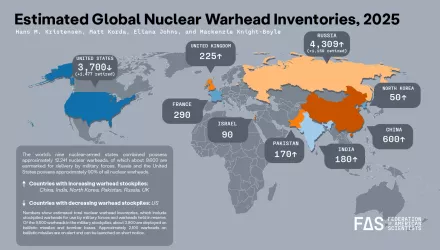
Remember Your Humanity: Why the Nobel Laureate Declaration Is a Call for Strategic Recalibration
From Managing the Atom
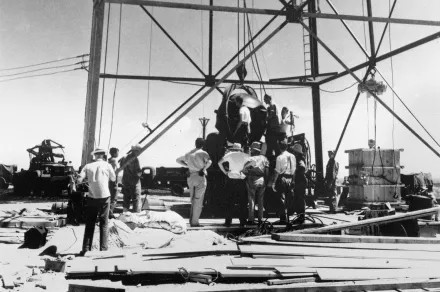
Reflections on the 80th Anniversary of the Trinity Test
Belfer Center experts provide critical analysis reflecting on the dawn of the nuclear age, as well as commentary on where we stand today.
Nobel Laureate Assembly for the Prevention of Nuclear War
Francesca Giovannini, Executive Director of the Project on Managing the Atom, joined 15 Nobel Laureates, Nuclear Scientists and Experts to commemorate the 80th Anniversary of the Trinity Test in July 2025.
The first ever Nobel Laureate gathering to focus on nuclear issues, the Assembly presented a list of actionable recommendations for preventing nuclear war aimed at leaders and policy makers around the world.
The Univesity of Chicago hosted the event organized by a group of Nobel laureates, the Bulletin of the Atomic Scientists, the Outrider Foundation and the Pugwash Conferences on Science and World Affairs.
Watch the Nobel Laureate Assembly for the Prevention of Nuclear War here
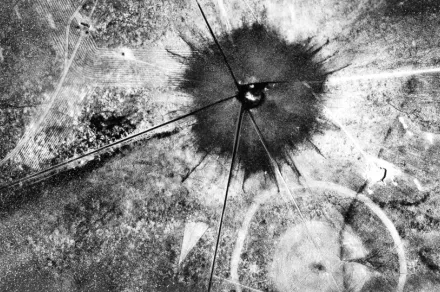
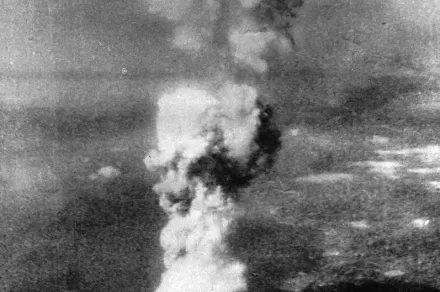
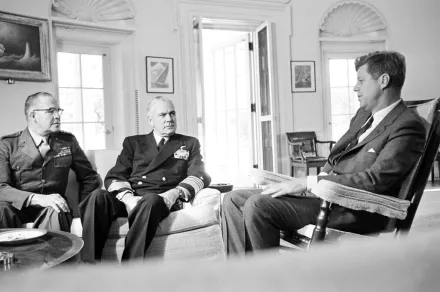
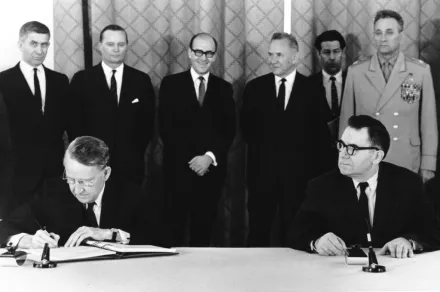

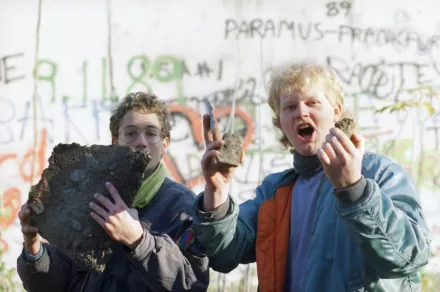
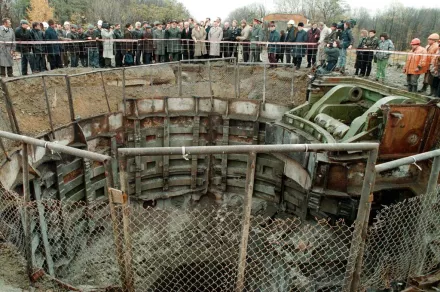
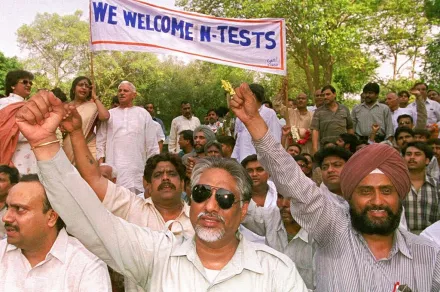
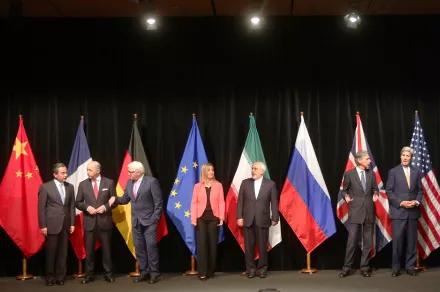
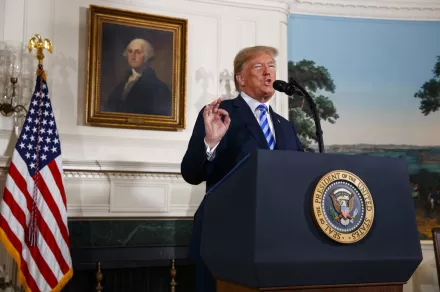
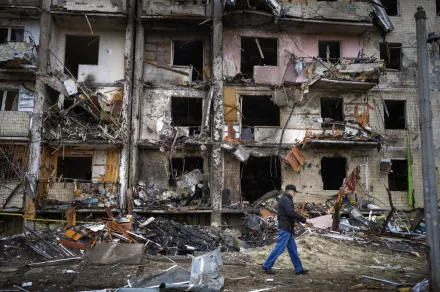
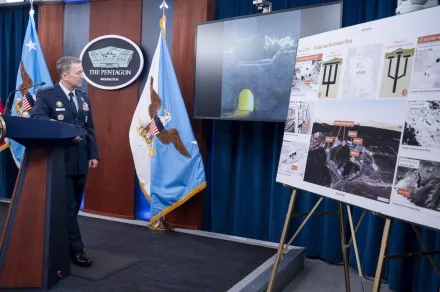
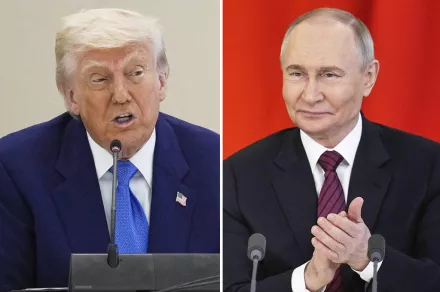

TRINITY TEST, JULY 16, 1945
At 5:29 AM, the world changed. In a remote stretch of New Mexico desert, the United States detonated the first nuclear weapon. Trinity marked the beginning of the nuclear age—an era defined by both unparalleled destructive power and profound responsibility.

HIROSHIMA AND NAGASAKI, 1945
Only weeks later, the U.S. dropped atomic bombs on Hiroshima and Nagasaki, killing over 100,000 civilians. The weapons ended World War II—but ushered in a global arms race and an ethical reckoning still unfolding today.

THE CUBAN MISSILE CRISIS, 1962
Thirteen days in October: the U.S. and Soviet Union stood on the brink of nuclear war. Diplomacy, restraint, and sheer luck pulled the world back. The crisis became a stark lesson: miscalculation could be catastrophic.

NUCLEAR NON-PROLIFERATION TREATY (NPT), 1968
With the NPT, nuclear and non-nuclear states agreed: proliferation must be prevented, disarmament pursued, and peaceful nuclear energy shared. Today, nearly every country is party to the treaty—yet its future is fragile.

ABLE ARCHER & NEAR MISS, 1983
A NATO exercise simulating a nuclear launch was mistaken by the Soviets as the real thing. The world narrowly avoided accidental war—thanks in part to one Soviet officer who chose not to escalate.

THE FALL OF THE BERLIN WALL, 1989
The Cold War thawed, and with it came hope: for cooperation, for disarmament, for a new era where nuclear weapons were no longer center stage. Treaties like START followed. But the danger never disappeared.

THE NUNN-LUGAR PROGRAM, 1991
The collapse of the Soviet Union left thousands of nuclear weapons scattered across four new nations—and at risk of theft, sale, or accident. In 1991, U.S. Senators Sam Nunn and Richard Lugar launched the Cooperative Threat Reduction Program, an unprecedented effort to secure and dismantle these “loose nukes.” Over three decades, the program deactivated more than 7,600 warheads, destroyed 2,000 delivery systems, and helped Ukraine, Belarus, and Kazakhstan give up their nuclear arsenals. It remains one of the most successful arms control initiatives in history—a model for what proactive cooperation can achieve in moments of global uncertainty.

INDIA & PAKISTAN GO NUCLEAR, 1998
Despite the NPT, nuclear weapons spread. India and Pakistan—regional rivals with deep animosity—tested weapons weeks apart, increasing the global count of nuclear states and adding new dimensions of risk.

THE IRAN NUCLEAR DEAL, 2015
The Joint Comprehensive Plan of Action (JCPOA) placed strict limits on Iran’s nuclear program in exchange for sanctions relief. Though imperfect, the deal rolled back proliferation risk in a volatile region—demonstrating what diplomacy can achieve.

U.S. WITHDRAWS FROM THE IRAN NUCLEAR DEAL, 2018
In May 2018, President Donald Trump unilaterally withdrew the United States from the JCPOA—the nuclear agreement with Iran, citing its sunset clauses and regional behavior. The move fractured international consensus and triggered a cycle of escalating tensions.

RUSSIA INVADES UKRAINE, 2022
For the first time since the Cold War, a nuclear-armed state invaded a sovereign state. Russia’s threats of nuclear use shattered taboos—and underscored how deterrence can be abused, not just relied on.

U.S. AIRSTRIKE ON IRAN’S ENRICHMENT FACILITIES, 2025
In late June 2025, the United States launched Operation Midnight Hammer to strike Iran’s deeply buried enrichment sites at Fordow, Natanz, and Isfahan—in response to intelligence that Iran was enriching uranium up to 60%. The attack injected new urgency into calls for a diplomatic resolution—underscoring that military action alone won’t eliminate nuclear risk.

NEW START & ITS UNCERTAIN FUTURE
New START—our last major arms control treaty with Russia—expires in 2026. Without it, mutual inspections vanish. The risk of arms racing increases. Time is running out to extend or replace the agreement.


